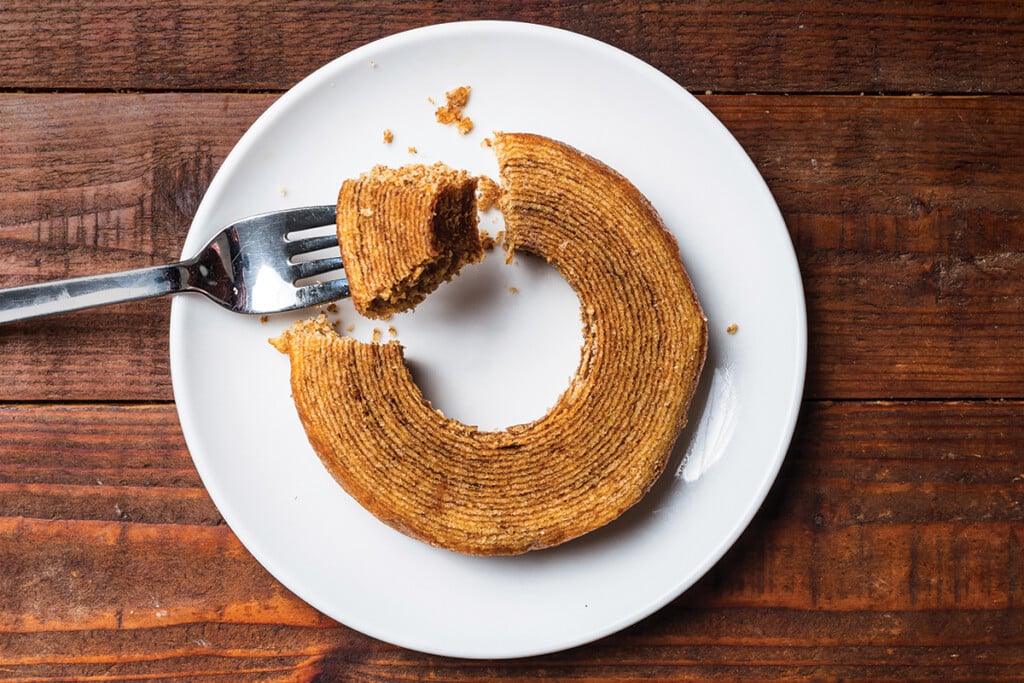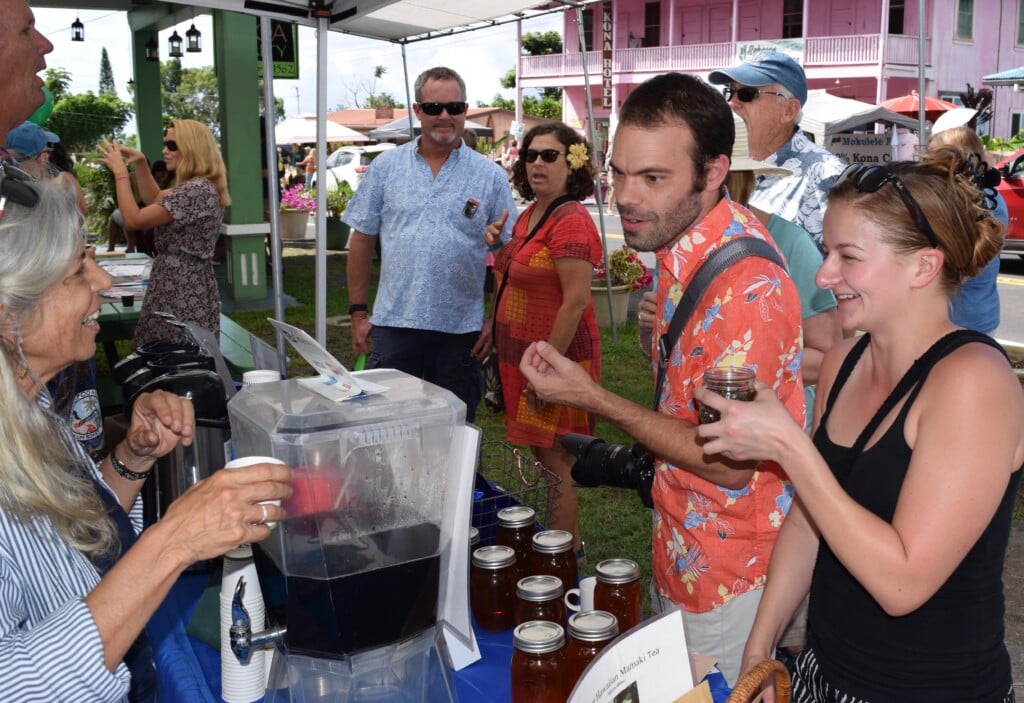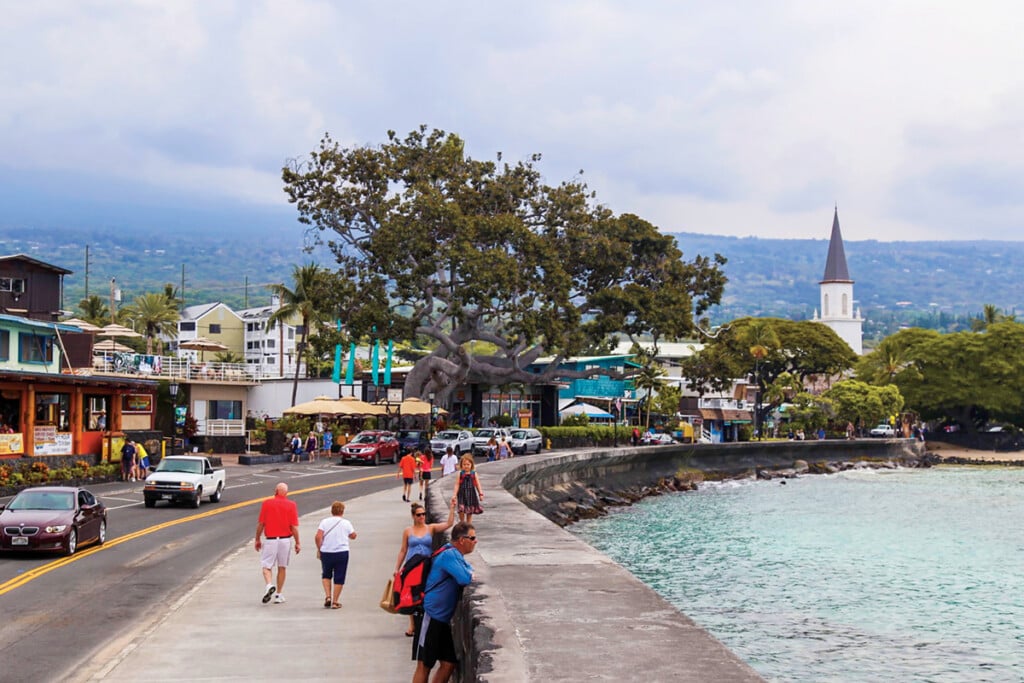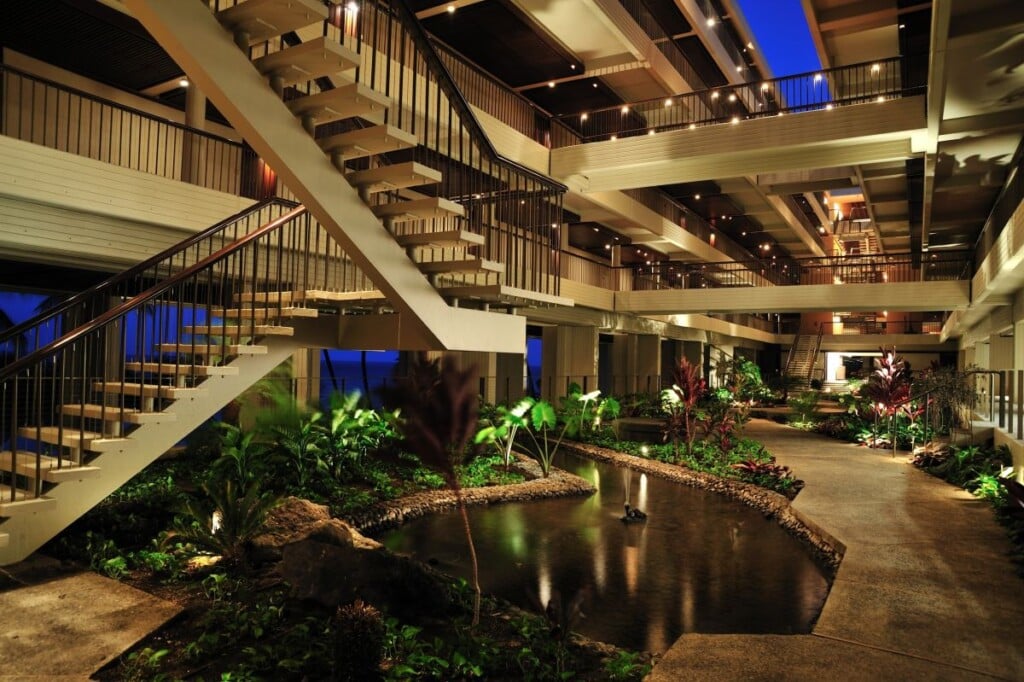Baumkuchen Farm Makes Sweet Cakes on Hawaiʻi Island and You Can, Too
Visit this family farm just outside of Hilo for a Japanese twist on the traditional German baumkuchen.

The first time Markus Stolz ate baumkuchen, a traditional German cake that resembles a hollowed cross-section of a tree trunk, he was in Japan—not Germany.
“It’s really soft and moist,” says Stolz, whose parents moved from Germany to Japan, where he was born and raised. “That makes this version much more different.”
The German version of the cake, which is often eaten during Christmas, isn’t as spongy or delicate. And Stolz, who moved to Germany at 18, preferred the lighter style made in Japan.
Then on a particularly cold and dreary winter day in Munich, Stolz was bored and started looking up real estate on Hawai‘i Island, where he and his wife, Marie, had honeymooned several years earlier. “I just wanted a warm feeling,” he says, laughing.

Marie and Markus Stolz moved from Germany to Hawai‘i Island four years ago.
Photo: Aaron K. Yoshino
But he was serious about moving to Hawai‘i, and he needed a plan.
And that plan was baumkuchen.
“There was no baumkuchen in Hawai‘i,” he says.
So, four years ago, Stolz relocated his family—which includes three kids—to Pāpa‘ikou, a sleepy town (fewer than 2,000 people) about 10 miles north of Hilo along the island’s rugged eastern coastline. The family purchased a 9.2-acre property up mauka (toward the mountains) that included a greenhouse, where Stolz is now growing vanilla, and groves of palm and mangosteen trees.
It’s here where Stolz and his wife produce delicate, Japanese-style baumkuchen, enhanced with Hawai‘i flavors like macadamia nut, Kona coffee, mango and pineapple. The couple had visited various shops and bakeries in Germany, then worked on perfecting a recipe that combined the best parts of both the German and Japanese versions.

Baumkuchen Farms offers cakes enhanced with local flavors like pineapple and Kona coffee.
Photo: Aaron K. Yoshino
Stolz shows us his specialized oven, which he brought from Germany. Baking baumkuchen—which translates to “tree cake”—is an elaborate and tedious process. The cake is baked on a stick, layer by layer, while it turns. This creates the cake’s “rings”—similar to the rings of a tree. The baker coats a spit with sponge cake batter and mounts it in the oven, rotating it slowly until the first layer is baked. The process is then repeated as many times as the desired amount of layers until the cake is done. The cake is then sliced into rings and taken off the spit. The result is a gorgeous ring-shaped cake with nearly paper-thin layers that Germans call “the king of cakes.”
The Germans are credited with baumkuchen, but there’s evidence that ancient Greeks and Romans made similar layered cakes. According to Stolz—who’s done extensive research on the dessert—the first version of a baumkuchen recipe was mentioned in 1426 in an Italian cookbook. The first recipe in the German language is from around 1450. It wasn’t until centuries later—in the 1800s—that the process evolved: The dough was no longer wrapped around a stick but added, layer by layer, over a rotating rod. This was also around the time the cake was referred to as “baumkuchen,” Stolz says. It was popular with kings—Germany’s Wilhem I made a baker from Salzwedel, famous for its baumkuchen, his royal court supplier of the cake—and other European countries had their own versions of it.
So how did this German cake get to Japan?

You can take tours of the operation and see how these unique cakes are made.
Photo: Aaron K. Yoshino
German baker Karl Juchheim moved from Germany to the Chinese city of Tsingtao during World War I. When the war ended, the Japanese army moved him and his wife to Japan as prisoners of war. They were later released and, instead of going back to Germany, decided to stay in Japan. In 1919 Juchheim made and sold baumkuchen at a German exhibition in Hiroshima staffed by war prisoners—and it was a hit. He and his wife moved to Yokohama and opened a pastry shop, where he specialized in making the German cake. Juchheim died in 1945, but his company, Juchheim Co., still operates out of Kobe, Japan, and continues to produce baumkuchen using his original recipe. Because of its ring shape, the cake is very popular in Japan for weddings.
You’ll learn all of this on one of Stolz’s farm tours, which run on Tuesdays and Fridays. And, if you happen to book a tour on a Tuesday, you’ll get to bake a baumstriezel—the predecessor of the baumkuchen—over an open campfire.
The dough is simple—flour, eggs, sugar, yeast, milk—and chilled so it can be wrapped around a long stick and held over a large fire pit. Marie Stolz teaches us how to properly wrap the dough, slightly overlapping. Then we brush it generously with melted butter—you can add cinnamon, if you want, which we did—and hold it over the roaring fire. Her three kids come out to bake baumstriezel, too. It’s their favorite day of the week.

The Stolzs have perfected a recipe that combines the best parts of both the German and Japanese versions.
Photo: Aaron K. Yoshino
“It’s better than roasting marshmallows,” she says, smiling.
Once the dough is cooked, beyond golden brown, we slowly and carefully peel it from the stick and dip the steaming hot bread into a chocolate sauce that Stolz makes. It’s downright sinful.
As we sit back and enjoy our baumstriezel, I think about how this traditional German cake made its way from Germany to Japan and now Hawai‘i; this farm is the only place in the Islands where it’s made and sold.
Markus Stolz has a theory: In 1881 King David Kalākaua went on an unprecedented world tour, visiting several countries, including Germany. He was entertained by Wilhelm II, the last German emperor. At the time, the German aristocracy loved baumkuchen, and Stolz suspects Kalākaua, the king of Hawai‘i, may have sampled the German dessert at one of the dinners he had attended.
“He could have been the first Hawaiian to ever eat baumkuchen,” Stolz says.
It’s possible. The fact that we’re eating it here, on a balmy afternoon in Hawai‘i, makes me think anything is.
27-714 Ka‘ie‘ie Road, Pāpa‘ikou, baumkuchenfarm.com.
This story was originally published in our 2022 Fall issue. Buy a copy here.


